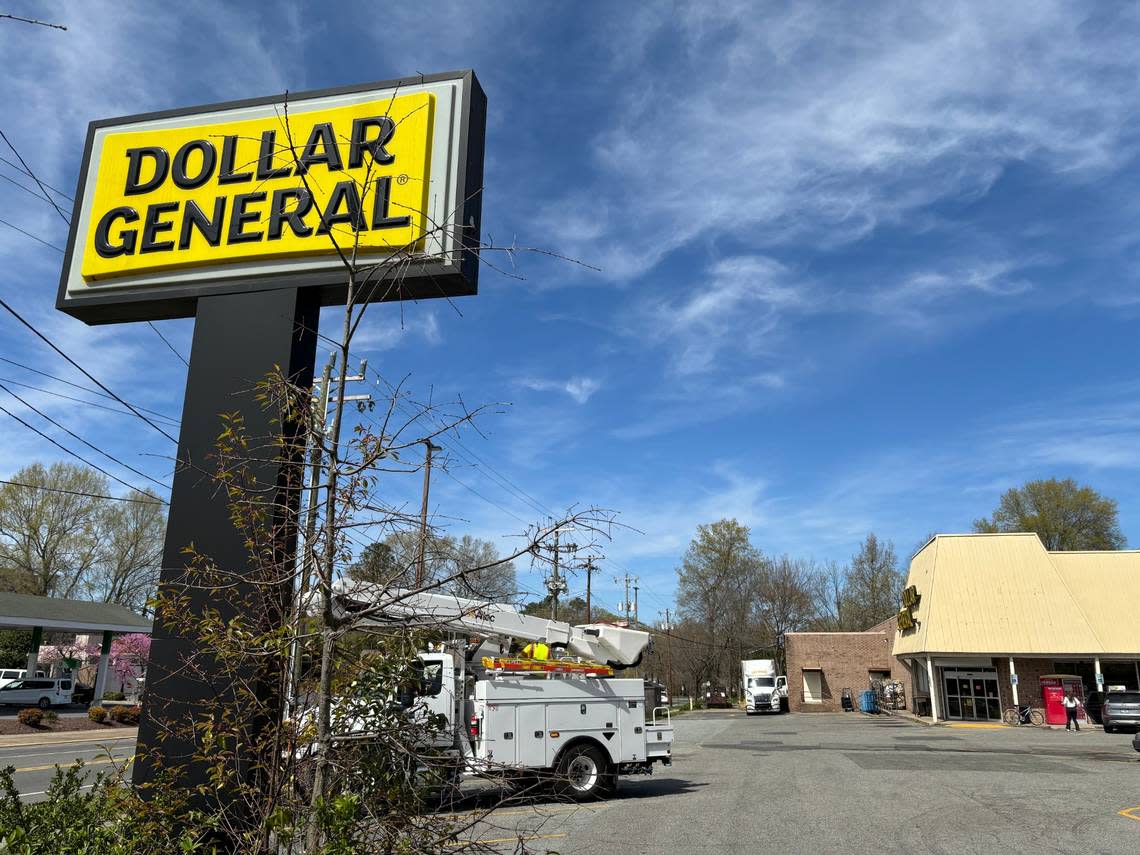Dollar General averaged a new NC store opening every nine days last year. That’s normal.

Dollar General opened dozens of more locations across North Carolina in the past year, even as the discount chain continues to face opposition to its ubiquitous black and yellow stores.
In its annual report released Monday, Dollar General recorded having 1,076 stores in North Carolina as of March 1, the third most of any state behind Texas and Georgia. In the last 12 months, the chain opened 41 stores in the Tar Heel State — an average of one every nine days.
This is about the pace of openings Dollar General has completed statewide since 2009 when the company only had 487 North Carolina sites. Today, even some smaller cities support numerous locations.
In Randolph County, Asheboro (population 27,500) has 14 Dollar General stores within a 15-mile radius. In Western North Carolina, the mountain town of Hendersonville has 16 stores within the same radius while the city of New Bern in Eastern North Carolina has 13.
For comparison, the greater Raleigh and Durham areas each has a dozen Dollar Generals, the company’s online store locator shows.
“They’re in areas where you couldn’t put a Walmart and they’re filling that hole,” said Rick Niswander, an emeritus accounting professor at East Carolina University who has studied the economics of variety discount businesses. “Think about North Carolina: There are a lot of little towns of less than 20,000 people.”
According to its latest annual report, around 80% of Dollar General stores nationwide are in towns with under 20,000 residents. Dollar General described its “core customer” as those from “low and fixed income households often underserved by other retailers (including grocers).”
Dollar General opposition
But not everyone is pleased with its expansion; several rural communities, including the tiny White Cross area in western Orange County, have organized Dollar General protests in recent years over concerns about public and employee safety, architectural aesthetics, and the impact the leading U.S. dollar store has on grocery chains and traditional mom-and-pop shops.
“We can’t sell our cigarettes as cheap as what a chain store does,” said Heather Moore of Moore’s General Store in Mount Airy, a Surry County city of 10,6000 with 10 Dollar General stores. “When you let big discount stores come in, the little guy just can’t compete anymore.”
Moore has recently fought against another Dollar General opening near her shop, and the public pushback, she said, has led to more zoning hurdles for developers who wish to build another location.
In Orange County, community opposition helped defeat a proposed Dollar General for the second time last year when county leaders voted 4-3 to deny a rezoning. County board Chair Jamezetta Bedford said the plan did not meet local land-use rules and would not help preserve community character or promote public safety, health and welfare.
Despite these pockets of resistance, Dollar Generals keep getting built statewide.
“The heart of it comes down to this whole idea of what people say and what people do,” Niswander said. “People can say ‘Oh, we really want the mom-and-pop in town.’ But if they don’t shop there, it won’t be there.”
Dollar Tree and Family Dollar
Chains like Dollar General, Dollar Tree, and Family Dollar offer low prices by buying in bulk and using their supply-chain infrastructure to ship products faster and more cheaply, Niswander explained. Leasing buildings, rather than constructing and owning the structures themselves, enables them to expand quickly with less upfront costs.
Though each has “dollar” in its name, the three brands cater to different markets. Dollar Tree primarily establishes in suburbs and sells most products for $1.25 (until recently, it sold all items for just $1.) Family Dollar, which Dollar Tree acquired in 2015, markets to lower-income customers, as does Dollar General. Both sell a wide-range of items at discounted prices that are mostly more than a dollar.
Dollar General separates itself in two ways. One, it emphasizes rural growth more than Family Dollar. And second, it is much bigger. Dollar General has more U.S. stores than Family Dollar and Dollar Tree combined. In the past year, it eclipsed 20,000 stores. And its lead at the top is poised to increase.
On March 13, Dollar Tree announced plans to close around 600 Family Dollar locations in 2024 and an additional 370 stores (plus 30 Dollar Trees) over the next few years as their leases expire. The company cited store performance and market conditions for deciding which locations to ax.
Compared to recent years, Dollar General’s growth in North Carolina over the past year was lower — 41 new stores represented the smallest increase since 2018. But on an investors call March 14, the day after Dollar Tree unveiled its closure aims, Dollar General shared it expected to open 800 new stores this year.
NC Reality Check is an N&O series holding those in power accountable and shining a light on public issues that affect the Triangle or North Carolina. Have a suggestion for a future story? Email realitycheck@newsobserver.com

